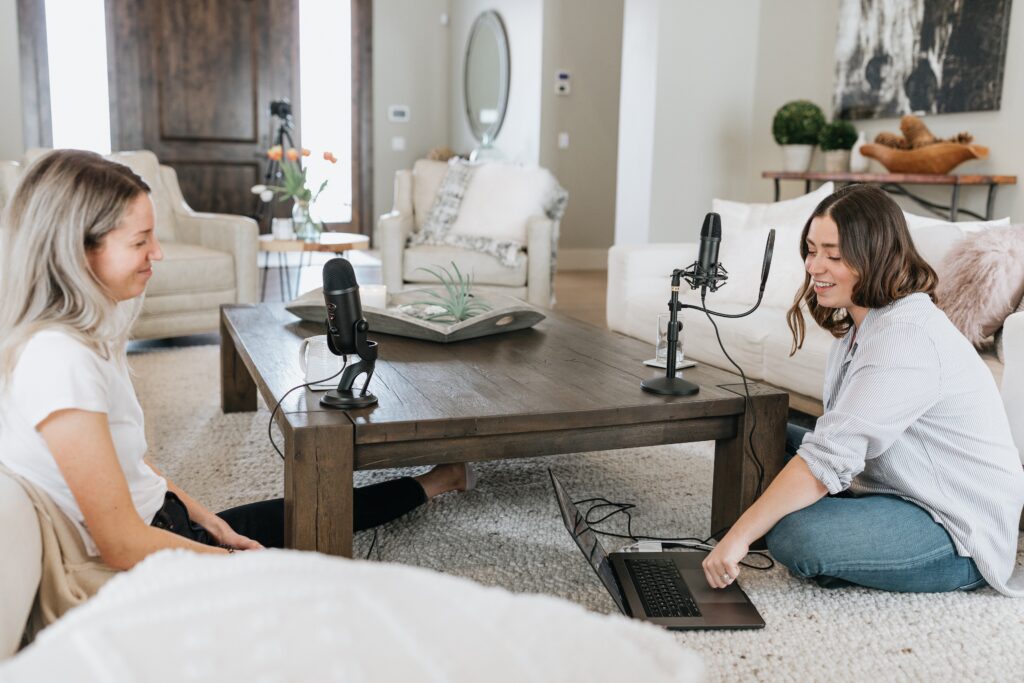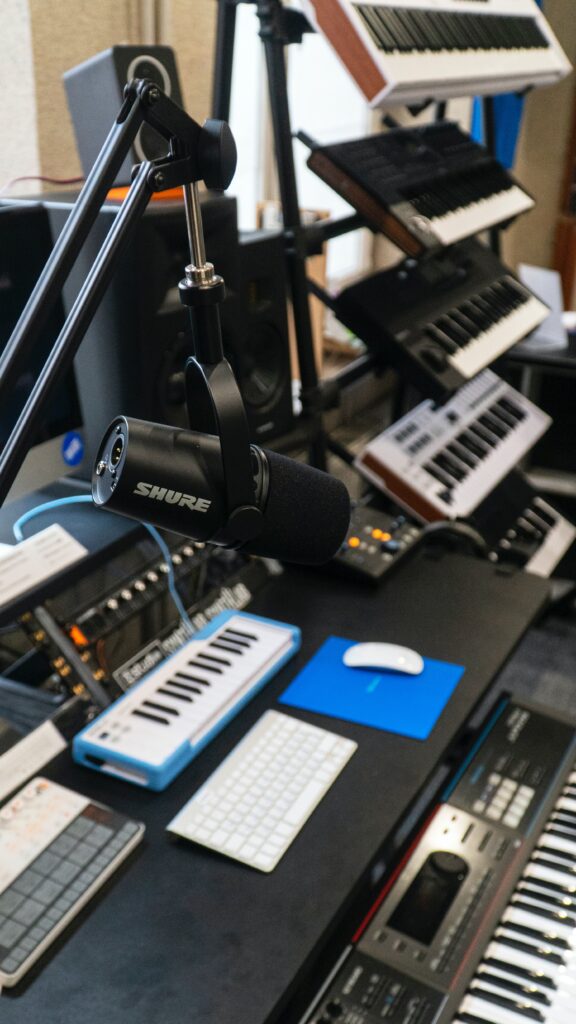Upgrading your home office set up with a dedicated microphone is a great decision. You’ll benefit from clear audio inputs during meetings which will enable you to communicate better and can impress your colleagues.
But due to a lot of available options in the market, it can sometimes be difficult to choose what microphone is right for you.
Don’t worry, this guide will help you decide which microphone to buy.
Deciding Between USB and XLR Microphones
The first thing you’ll need to know about available microphones in the market is that there are two modes of connection: USB and XLR. And aside from the obvious difference, which is the cable, there are some significant differences that you’ll want to know before making a purchase.

USB Microphone
Let’s talk about USB microphones first. USB microphones, as the name suggests, use a USB cable as means of connection to the computer.
And the major difference that it has over an XLR mic is that inside a USB microphone it already has a built-in pre-amplifier and audio interface that converts analog signal to a digital signal. Now this major difference brings us to its main advantage.
The Good: Convenient to Install and Use
Due to having a built-in internal audio interface and pre-amplifier, USB mics are very convenient to use. You just plug it in and then the drivers will automatically install. And after a few minutes, it will be ready for use.
Due to this convenience, USB mics are advisable for users that want hassle-free usage. Those that don’t have the time to learn the basic knowledge needed to install an XLR microphone.
The Bad: Poor Electronics and Less Flexible
But the reason why it’s convenient (its built-in pre-amp and audio interface) to use is also the cause of its major disadvantage-poor electronics.
Due to how small a microphone is, the pre-amp and audio interface to be installed inside it have to be very small. And due to this size constraint, the electronics installed inside are usually poor in quality, especially those microphones that are very cheap. The result of poor electronics in a mic is a loud mic self-noise. Mic self-noise, in simple terms, is the static noise that it produces which mixes into the output of the microphone.
To avoid this poor electronics issue, it is advisable to avoid buying cheap USB microphones and instead buy from reputable brands like BlueMic Yeti and Audio-Technica. But, of course, this is a bit pricey. Good entry-level USB mics can range from $100 to $200.
Another major disadvantage of using a USB mic is that it’s not flexible. This means that aside from computer usage, it’s not possible to use it on analog devices such as mixers and other sound consoles.

XLR Microphone
XLR mics, like the name suggests, use an XLR cable for connection. And unlike a USB mic, it doesn’t have a pre-amp and audio interface installed inside of it. So, in its basic form, all it has is the diaphragm capsule, the coils, and the capacitors. And this leads us to its main disadvantage.
The Bad: A Bit Inconvenient and Requires a Bit of Learning
So unlike USB mics, XLR microphones are a little bit inconvenient to use on a computer because you’ll need a separate audio interface. As previously mentioned, an audio interface is a device that converts analog signals to digital signals. Usually, an audio interface looks like a small box with knobs on it.
Due to this need for a separate device, it can be inconvenient since installing the audio interface needs to be manually done and the computer settings need to be changed for it to successfully integrate into the computer system. But aside from the inconvenience, opting to buy an XLR microphone has a major advantage.
The Good: Better Sound Quality and Wide Selection
The major advantage of using an XLR mic is it gives a better sound quality than a USB mic. And the reason for this is that a standalone audio interface has better pre-amplifiers. A better pre-amplifier means that its digital output provides better volume output with lower noise and minimal distortion. Thus, resulting in better sound quality.
Another advantage of opting for XLR mics is that there is a wide selection available from various brands at various price points. In fact, XLR mics can be divided further into two major categories: condenser and dynamic. The difference between the two is something that will be covered in our upcoming articles here on our website. So, stay tuned for that.
How Much Should I Spend on a Microphone?
Well, for a home office setup, a reasonable budget for a brand new microphone would be around $100 to $200. If you’re lucky and you got some items on sale, it can be less than that.
But the answer to this question really depends on how much you’re willing to spend and the sound quality that you want to achieve. Of course, the better you want the sound to be the pricier it will be.
Summary
To summarize what we’ve talked about, there are a lot of considerations to be made when buying a decent microphone.
For a hassle-free microphone installation then USB microphones might be a better choice. But if you want to have better sound quality and flexibility, then buying an XLR microphone is the way to go.
